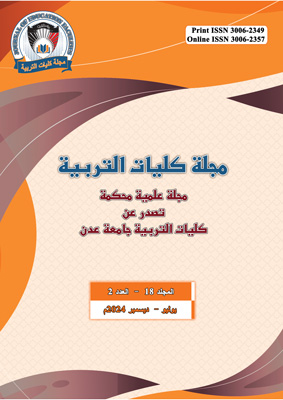Using MRI to Detect and Diagnose Glioblastoma Multiform
DOI:
https://doi.org/10.47372/jef.(2024)18.2.78Keywords:
Magnetic resonance, Zeeman effect, Lenz- Fraday law, Fourier transform, Inverse Fourier transform.Abstract
Magnetic resonance imaging is a safe and high-quality diagnostic tool in detecting tumors, their size, determining their location, and diagnosing them accurately in the human body, especially in the brain. The most prominent of these tumors is glioblastoma multiforme. This type of imaging has high soft tissue contrast, compared to ionizing imaging technology as in X-rays and CT scans.
In MRI Imaging when we placed the human body in a strong external magnetic field of strength , its magnetic spins of hydrogen nuclei of its tissues align parallel and anti-parallel to the external field. According to the Zeeman effect, this creates a net magnetic field toward the external magnetic field we call it a longitudinal magnetization which is responsible for creating an image of these tissues in human body.
Hydrogen nuclei of net longitudinal magnetization precess around the axes of the external field by Larmor frequency giving from the Larmor equation, where is a magnetic gyroscope ratio.
To measure this longitudinal magnetization, we have to flip it into XY plane. This can be done by using radio frequency waves generated by radio frequency coils (Faraday-Lenz law), these waves excite the hydrogen nuclei to flip the magnetization from the longitudinal direction Z to the transverse plane XY away from the external field to enable it to be measured. This is done when the frequency of the transmitted radio pulse is equal to the precession Larmor frequency of the hydrogen nuclei to achieve the condition of magnetic resonance. After stopping the radio frequency pulse, we are able to obtain the signals coming from the hydrogen nuclei present in our bodies and record them via radio frequency coils according to Faraday-Lenz law and we obtain continuous composite electrical signals. Then we use the mathematical Fourier transform to convert these continuous composite signals into discrete values to fill the K-space. After processing the discrete signals, we use the inverse Fourier transform to obtain an image to give a visual representation of human tissue without surgical intervention for clinical diagnosis.
Downloads
Published
How to Cite
Issue
Section
License
Copyright (c) 2025 Journal of the Faculties of Education - University of Aden

This work is licensed under a Creative Commons Attribution-NonCommercial 4.0 International License.

